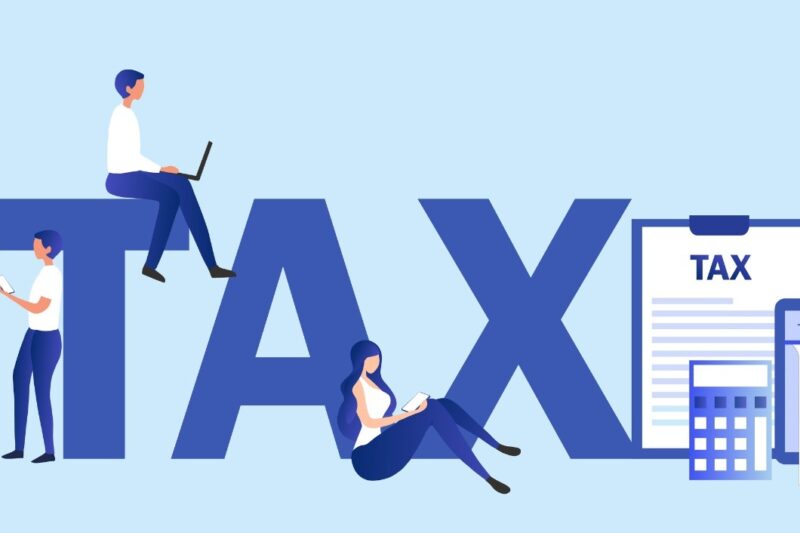If you’re looking to legally reduce your income tax burden in India, Section 80C deductions offer the most popular route. With the right tax-saving investments and planning, you can claim deductions of up to ₹1.5 lakh each financial year under this section. From Public Provident Fund (PPF) to Equity-Linked Savings Scheme (ELSS) and National Savings Certificates (NSC), there are many tax-saving instruments to explore.
In this blog, we’ll break down all the eligible options under Section 80C, provide examples, share expert tips, and answer common FAQs to help you maximize your tax deductions under Section 80C effectively and wisely.
What is Section 80C of the Income Tax Act?
Section 80C allows individual taxpayers and Hindu Undivided Families (HUFs) to claim deductions of up to ₹1.5 lakh from their total gross income. The goal is to encourage long-term investments and savings by providing tax benefits.
List of Popular Investment Options Under Section 80C
Here’s a table comparing the most used options for claiming 80C deductions:
| Investment Option | Lock-in Period | Expected Returns | Risk Profile |
| PPF | 15 years | 7-8% (fixed) | Low |
| ELSS | 3 years | Market-linked | Moderate to High |
| NSC | 5 years | 7-7.7% | Low |
| 5-Year Tax Saver FD | 5 years | 6-7% | Low |
| Life Insurance Premium | Until maturity | Varies | Low |
| Sukanya Samriddhi Yojana | 21 years | 8% approx. | Low |
| Employee Provident Fund (EPF) | Till retirement | 8.25% (approx.) | Low to Medium |
| Senior Citizen Savings Scheme (SCSS) | 5 years | 8%+ | Low |
How to Save Income Tax Using Section 80C Deductions
1. Invest in ELSS (Equity Linked Savings Scheme)
- Shortest lock-in period among all 80C investments (3 years)
- Potential to earn higher returns
- Ideal for salaried individuals seeking tax savings with market returns
2. Use Public Provident Fund (PPF) for Long-Term Goals
- Suitable for conservative investors
- Offers compound interest and is backed by the government
- Tax-free maturity amount
3. Opt for NSC or 5-Year Tax Saver FDs
- Fixed income, safe options
- Ideal for first-time investors or retirees
4. Pay Life Insurance Premium
- Deduction is available on the premium paid for self, spouse, and children
- Helps protect your family’s financial future while saving taxes under Section 80C
5. Invest in EPF via Employer Deduction
- Contribution made to your EPF account is eligible under 80C
- Best suited for salaried employees
Things to Consider Before Investing Under Section 80C
- Lock-in Period: Know how long your money will be tied up.
- Return Expectation: Choose based on risk tolerance.
- Taxation on Maturity: Some investments, like PPF, are tax-free, while others may be taxable.
- Financial Goal Alignment: Match your 80C investments with long-term goals like retirement, child’s education, etc.
- Avoid Overlapping Deductions: For example, tuition fees and home loan principal also qualify under 80C—plan accordingly.
How to Calculate Tax Saved Using Section 80C?
Here’s an example:
| Particulars | Amount (₹) |
| ELSS Investment | 50,000 |
| PPF Contribution | 40,000 |
| Life Insurance Premium | 30,000 |
| Tuition Fees (for 1 child) | 30,000 |
| Total Deduction Under 80C | 1,50,000 |
Assuming you’re in the 30% tax bracket:
Tax Saved = 30% of ₹1,50,000 = ₹45,000
FAQs on Section 80C
What is the maximum deduction allowed under Section 80C?
You can claim up to ₹1.5 lakh in a financial year under Section 80C.
Can I invest in multiple instruments under Section 80C?
Yes, you can combine multiple eligible options (e.g., ELSS + PPF + LIC premium) up to the ₹1.5 lakh limit.
Are the returns from Section 80C investments taxable?
It depends on the instrument. PPF and ELSS (after 1 lakh) are tax-free; FDs and NSC returns are taxable.
Is the tuition fee for children covered under 80C?
Yes, tuition fees paid to Indian schools or colleges are eligible under Section 80C for up to two children.
Do I need to submit proof for 80C investments?
Yes, if you’re a salaried employee, submit proof to your employer. Others should keep them for filing purposes.
Conclusion
Understanding how to use Section 80C deductions can help you save up to ₹1.5 lakh in taxes annually. Whether you choose ELSS for high returns, PPF for safe long-term growth, or NSC for fixed income, aligning these investments with your financial goals ensures maximum benefit.
By planning smartly and investing in the right mix of instruments, you not only reduce your tax liability but also build a disciplined habit of saving. Use Section 80C to your advantage this financial year and make informed decisions.




